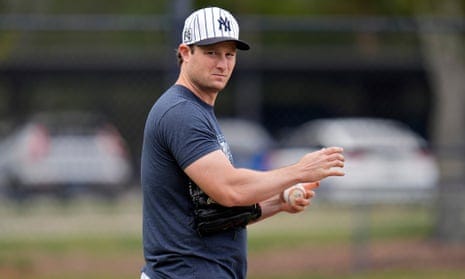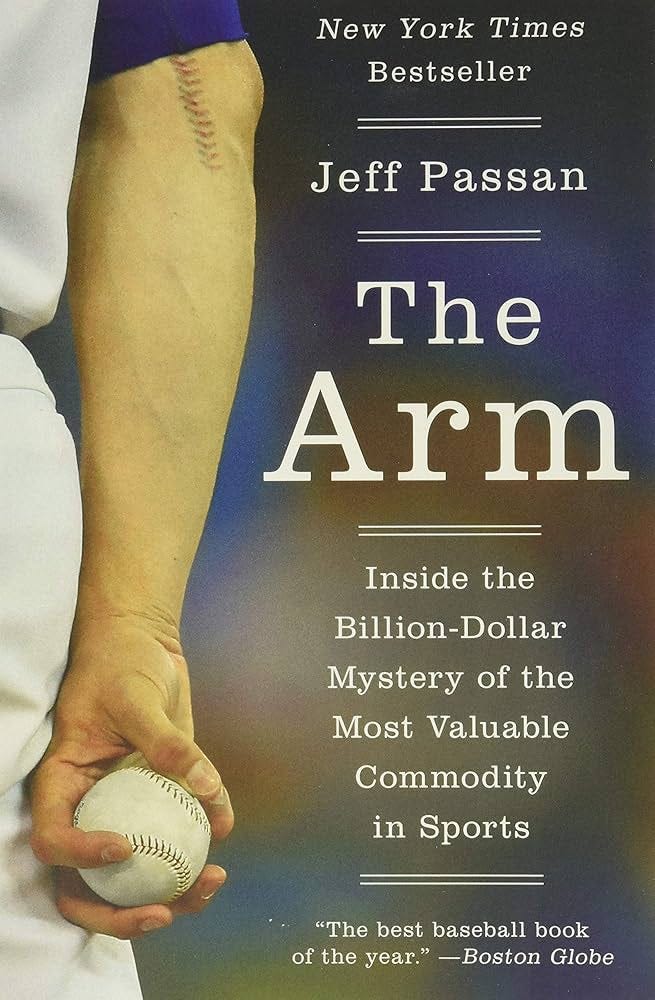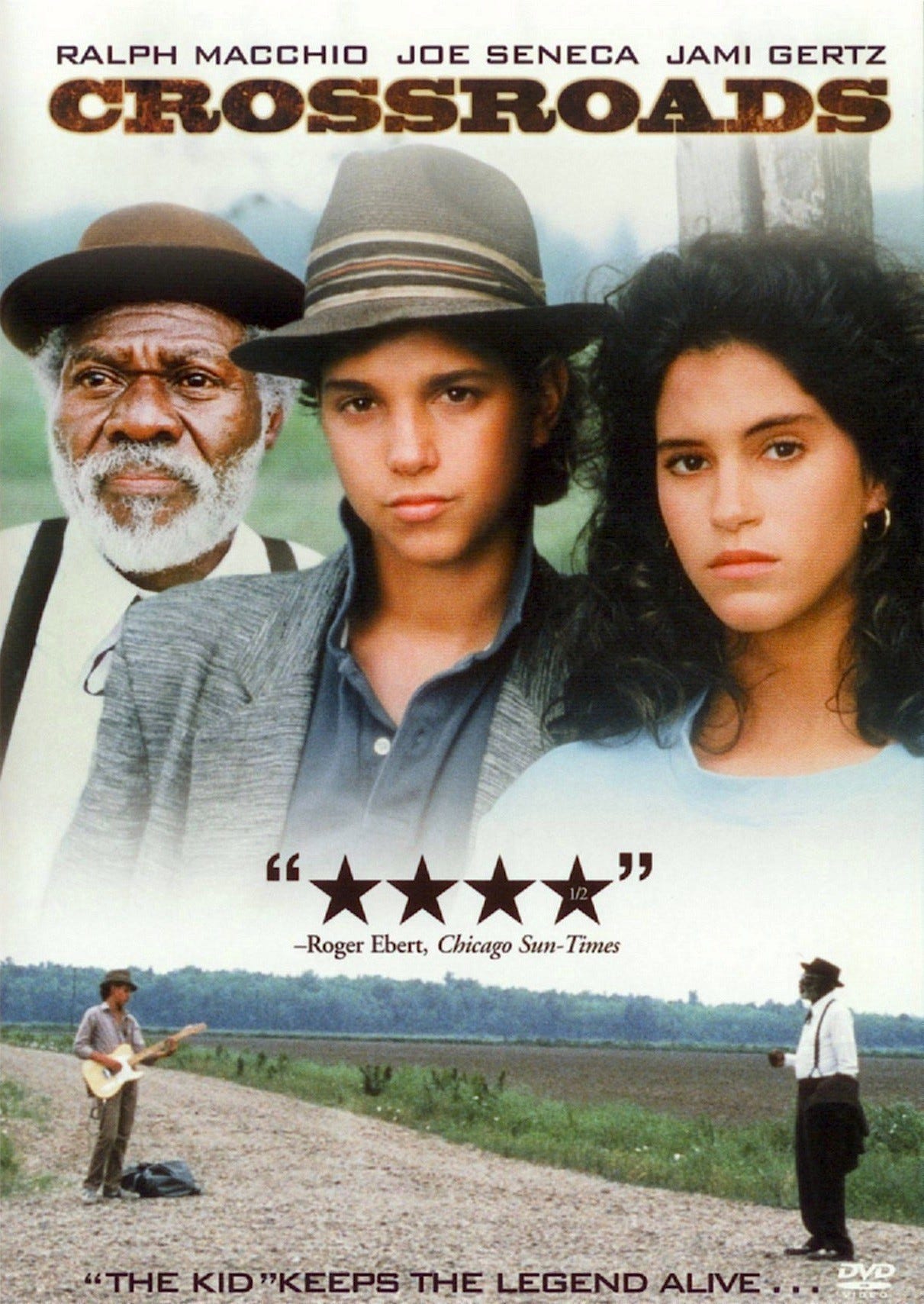The starting pitcher is the single most valuable commodity in baseball. But they’re all breaking. And it’s partly down to the data revolution that has transformed the sport. What’s wrong with Gerrit Cole’s right arm?
An ‘ace’ - the best pitcher on the staff of an MLB team, the one who would start Game One of the World Series - takes the field only once every five days, such are the demands on his throwing arm. Yet he is paid over $30m per year, sometimes considerably more than that.
When he throws, a successful outing might entail seven innings of work, throwing perhaps 90 pitches. His fastball might be in the high 90s in terms of mph, the arm and body contorting to curse each pitch with spin that makes it sink or slide, curve or sweep, or sometimes just blast into the catcher’s mitt before the batter can twitch an eyelash.
He leaves the mound and immediately begins a recovery process aimed at ensuring he is ready to do it all again in five days’ time.
The value comes from the likelihood of his team winning the game in which he starts.
Before I get into the details, please subscribe to this blog. It’s your guide to the 2025 MLB season and it’s totally free.
Of all starting pitchers in 2024, Chris Sale had the lowest Earned Run Average - that is the number of runs opposing teams scored against him for every nine innings he pitched (excluded are runs scored as a result of errors in the field, for example, to which the quality of his pitching is not a contributing factor).
Sale’s ERA was 2.38. So if Sale took his Atlanta Braves through seven innings, the chances are the opponent had either a zero, or a one, or a two in the run column at that point, which gave Atlanta a great chance to win that game.
Gerrit Cole, the ace of the New York Yankees, has a career ERA of 3.18, and that covers 12 years of incredibly consistent - and at times untouchable - MLB pitching. He is 34 years old and two years ago won the Cy Young Award for the best pitcher in the American League.
And this week it was revealed that he requires surgery that will put him out for the entire of the 2025 season and the first chunk of the 2026 campaign. The procedure he will undergo is named after the baseball player who pioneered it. That name today signifies an innovative and career-saving surgery, and also strikes dread into the very souls of every pitcher in the game: Tommy John.
Tommy John surgery corrects a tear in the ulnar collateral ligament (UCL) in the pitcher’s throwing elbow, by reconstructing it using ligament from another part of the body.
And about one third of pitchers currently active in MLB have had the procedure at least once. That doesn’t mean the chances of an MLB pitcher requiring Tommy John surgery are one-in-three, as the frequency of this kind of injury increases every year. And the recipient is typically out of action in the big leagues for between 14 and 20 months. Yikes.
In the latest edition of my favourite podcast in the world, Talkin’ Baseball, which dropped today, MLB pitcher Kyle Gibson suggested that “80 to 85 per cent” of MLB pitchers would require this surgery - and that amount of downtime - during their careers.
What the hell is happening?
I’m about a third of the way through a book on this issue. It’s really not for beginners, but if you’ve already crossed into baseball nerd territory, Jeff Passan can really tell a story, and this one is kind of explosive, in a baseball nerdy way.
I don’t know much about the legend of Faust, but I have watched Crossroads, the movie that ensured Karate Kid Ralph Macchio would have to wait until his middle age and a Netflix reboot to capitalise on the rookie heat he got from sweeping the floor, painting the fence, waxing both on and off, and playing football with Elisabeth Shue.
Faust, Ralph and many others have been offered a deal with the devil, who offers material gain in exchange for the forfeiture of the bargainer’s soul.
I don’t know why the devil is collecting the ulnar collateral ligaments of Major League pitchers instead of souls these days, but he sure as hell is. Perhaps the Prince of Darkness is using them to restring the guitar played by Steve Vai as Satan’s lead axe shredder in Crossroads. In exchange, he is granting them the power to hurl the baseball at 100mph.
Or perhaps this pact is being engineered by Major League Baseball itself. Jeff Passan’s brilliant book explains the sport’s insatiable appetite for velocity. From an early age, promising pitchers learn that a fastball in the mid-90s is like an entry visa for the big leagues.
The average MLB fastball in 2000 was coming at you at 89mph. By 2023, that had ticked up to 94mph, with a substantial cohort of starters and relief pitchers reaching the triple digits that used to be reserved for the game’s absolute speed freaks.
In that same podcast, Gibson says that earlier in his career, when software began to track the speed and trajectory of every pitch and data points such as velocity, spin rate and vertical movement were used to recruit pitchers, the word was that a 1mph increase on your fastball produced a 0.3 drop in your ERA. As the podcast host, former Major Leaguer Trevor Plouffe points out, that kind of shift can be worth millions of dollars to a pitcher when his next contract comes around.
Passan reports that kids in college baseball and even high school are among the record numbers now undergoing Tommy John surgery. The riches on offer are simply too great for those young men to be dissuaded from throwing as hard as they can, as often as they can.
The off-ramp, according to Passan, may have to include regulations to prevent overuse of pitchers, and to increase rest. That’s unlikely in the league they call ‘The Show’, where high-octane pitchers are among the game’s biggest stars and highest earners.
“[Tommy John surgery] is inevitable - whether you’re 35 or 15” said Cole’s stablemate in New York, Carlos Rodon, who had the procedure in 2019.
Forgive me for making yet another football analogy, but imagine if we knew for a statistical fact that 85% of forwards in the Premier League were going to blow an ACL during the peak of their careers, missing 18 months.
That’s what life is like for baseball’s pitchers, stuck in a game of Russian Roulette, knowing, like Christopher Walken in The Deer Hunter, that eventually the hammer will come down on the wrong chamber.
The stakes aren’t quite as high - but the endeavour seems equally irrational.
Hey thanks for reading. Please share my blog. It’s a guide through the 2025 MLB season for new baseball fans and it’s totally free.






